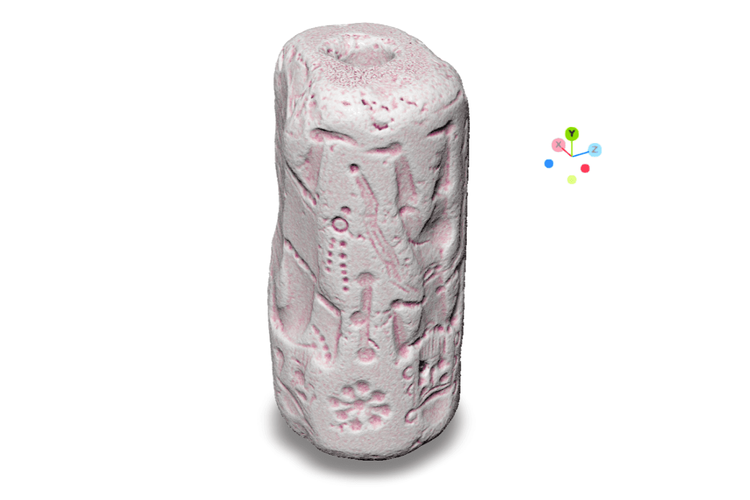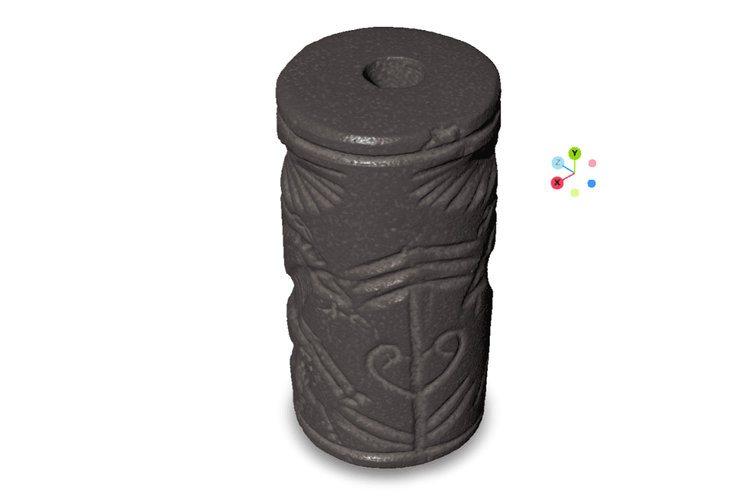In partnership with the Central 3D Institute at TU Berlin, experiments were conducted to digitize five cylinder seals from the Institute of Near Eastern Archaeology’s collection at the FU Berlin.
Led by Prof. Elisa Roßberger, the project aimed to explore how to successfully create 3D models of these more than 3,000-year-old objects. Their small size, fine surface structures, and shiny, slightly translucent material pose particular challenges for 3D scanning, which could only be overcome with the Central 3D Facility’s state-of-the-art Nanotom M micro-computed tomography scanner.
Another question was what additional benefits an interactive 3D model might bring to the study of the nature and manufacture of cylinder seals. 3D digitization provides an interesting starting point for further research regarding the geometry of the central holes in particular, from which conclusions can be drawn about the techniques used.
ZE3D’s team scanned the objects and has reported on the conceptual considerations involved in selecting the technology as well as the experiences gained during implementation in a detailed article on our blog.




